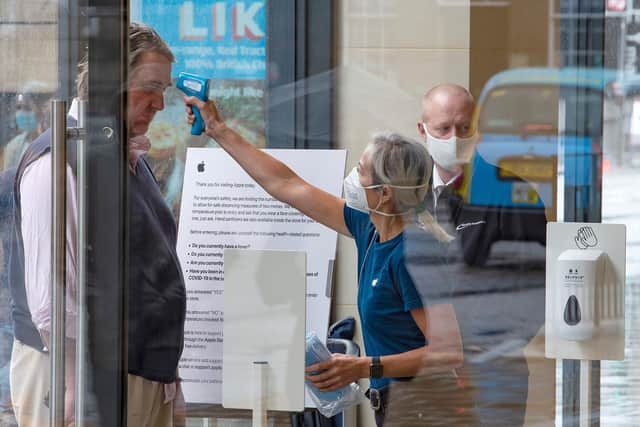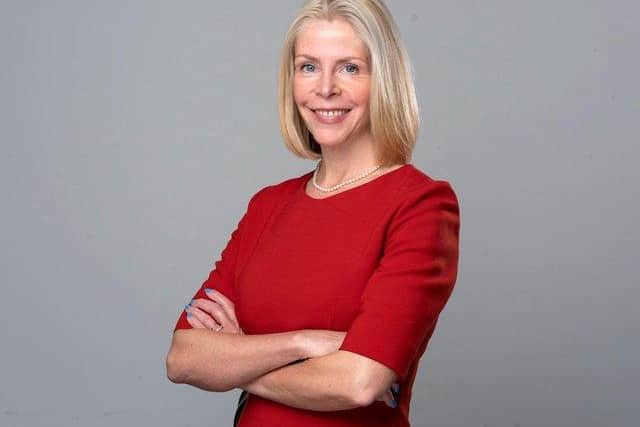Covid Scotland: What will life beyond level zero look like?
This means a move to level zero on July 19 and to “beyond level zero” on August 9.
But with its clunky and somewhat dystopian-sounding name, what does life “beyond level zero” actually look like in Scotland?
Advertisement
Hide AdAdvertisement
Hide AdThings will not return completely to the normality we were used to before the pandemic, but most of the more intrusive restrictions are likely to be eased.


Professor Linda Bauld from Edinburgh University, has described “learning to live with” Covid as restrictions ease.
She told the BBC’s Good Morning Scotland on Friday: “We have to learn to move from a pandemic to an endemic situation and I think that's what the phrase means.
"It means that it will not be a virus that threatens health everywhere in the world, which is the part of the definition of a pandemic, but something that we have to manage and cope with.
“The way to manage and cope with it is through vaccines, probably repeat vaccinations – we know boosters are already planned – and regular testing, which I think we're going to need to use for quite some time, but being able to remove the distancing and the other things we've been using that have separated us from social and economic life.”


The conditions of beyond level zero are still under review by the Scottish Government, but here is an outline of what we might expect.
Social distancing and face masks
Under the current plans, social distancing requirements are due to be scrapped indoors and outdoors beyond level zero.
This is conditional on two things. The first is all over-40s having been given two doses of vaccine, which is likely to have been achieved by August 9.
Advertisement
Hide AdAdvertisement
Hide AdThe second is a general review into the state of the pandemic and it is this that may put the easing of the rule at risk.
Ms Sturgeon has also said even if the legal requirement is lifted, the Scottish Government may still continue to advise 1 metre distancing indoors, which is the legal requirement in level zero.
Face masks may still be required in some settings, including shops and public transport.
Contact tracing
The Scottish Government has said contact tracing will continue beyond level zero, but questions remain about how this will work.
Amid increasing pressure on the system as cases rise, there have been some calls to relax isolation requirements, for example for health workers, or those who have had two vaccine doses.
The government will “regularly review” Test and Protect and the system is likely to change.
This may mean contact tracing not being used in the general population, but instead focused around specific circumstances, like big events or travel, or on regional case outbreaks as they develop.
Vaccines
The first round of Covid vaccination is set to be completed in mid September, with all adults offered two doses. The next stage will be a third “booster” dose for the most vulnerable.
Advertisement
Hide AdAdvertisement
Hide AdSubject to a final decision from the JCVI, this programme will begin from September, as soon as all younger adults have had their second dose – or possibly before, as different vaccine stock is needed.
The first group to get a booster will include all over-70s, frontline health and social care workers, and all over-16s who are extremely clinically vulnerable.
They will be followed by all over-50s, and anyone over 16 at higher risk of Covid or flu.
The next big question in vaccination hangs over 12 to 15-year-olds. The Pfizer vaccine has been approved in terms of safety for this age group by the Medicines and Healthcare products Regulatory Agency (MHRA), but the JCVI has yet to give advice on it.
Travel
This is likely to be one of the last areas to return to “normal”, as the biggest risk to Scotland’s progress in coming out of the pandemic is the importation of new variants.
The Scottish Government has said it is planning a more long-term version of hotel quarantine in some situations.
The requirements for this are likely to further reduce, with travel to more areas allowed in future based on low case rates and some kind of vaccine passport – based on a combination of proof of both doses, a recent infection or a recent negative test.
Working from home
Office workers will no longer be told to work from home, with the Scottish Government supporting a “phased return” to the office.
Advertisement
Hide AdAdvertisement
Hide AdHowever, the government has said it envisages more home working in future, both as a measure to reduce the risk of virus spread and as more flexible working conditions for staff.
Employers are “strongly encouraged” to allow staff to continue working from home if they want to, but it seems unlikely there will be a requirement for businesses to comply with this.
Furlough
The furlough scheme is currently set to continue until the end of September. It has begun to wind down, and changes came into force this week to make it less generous and require employers to contribute more.
Whereas previously the UK Government paid up to 80 per cent of the wages of employees on furlough, this has dropped to 70 per cent, with employers now required to pay 10 per cent.
In August and September, the government will pay 60 per cent and employers will pay 20 per cent.
The UK Government aim is for employers to take workers off furlough and back into full-time employment, but there are fears the end of the furlough scheme will lead to redundancies.
A message from the Editor:
Thank you for reading this article. We're more reliant on your support than ever as the shift in consumer habits brought about by coronavirus impacts our advertisers.
If you haven't already, please consider supporting our trusted, fact-checked journalism by taking out a digital subscription.
Comments
Want to join the conversation? Please or to comment on this article.
